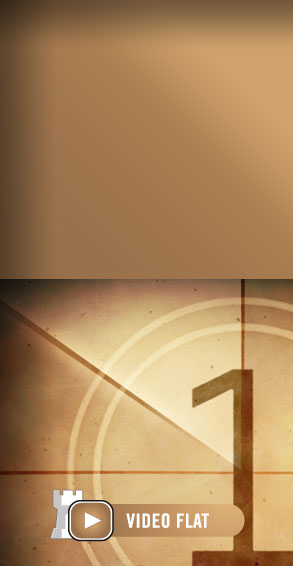Daniel King: Power Play 8 - Knights and Bishops
By Michael Jeffreys
While ChessBase uses several chess experts to make their instructional DVDs, my favorite is GM Daniel King. I have been a big fan of his since his days commenting on the exciting Intel Grand Prix matches with GM Maurice Ashley back in the mid-nineties.
To me, what makes King so good is his excellent explanation of chess positions combined with his natural enthusiasm for the game, which can’t help but rub off on the viewer. This, plus the fact that he looks right into the camera while speaking with his charming British accent, makes for an easy to follow and enjoyable experience anytime I pop in one of his DVDs.
Still, I couldn’t help but wonder after doing seven of these, had the Power Play series run its course? I mean, if you have seen one have you seen them all? The answer, I am happy to report, is NO! The material on Power Play 8, Knights and Bishops, is extremely interesting and instructive, and unless you are already a titled player, you will definitely learn a lot. Trust me when I tell you, and I look at a lot of chess DVDs, King’s latest offering is really good. For example, take a look at the screen shot below:

Black to Move
This position is from Saidy-Fischer, 1964 US Championship, and is the first example from the DVD. Question: What is your assessment of the position?
Material is equal with both sides having but a single minor piece and six pawns (with three pawn islands each), so it must be a draw, right? Or, perhaps White is better because he has a bishop versus a knight with pawns on both sides of the board (which we know favors the bishop)?
Somewhat surprisingly, it is in fact BLACK who is better here, if only slightly. The reason, as King points out, is due to the pawn on d4, which impedes the bishop’s mobility. Still, you would think that White could at least hold the position. And between two class players, the game probably would end peacefully. However, you just know that if there is a way to win it, Fischer is going to find it.
King explains that the key is figuring out the best square for the knight. At first glance, the squares c4 and e4 look like tempting outposts. But the problem is that the outposts are not secure as White can play b3 or f3 and chase the pesky steed away. Also, having the knight on either of those two squares doesn’t put any pressure on White’s big weakness in the position, the d4 pawn.
It turns out that the magic square for Black’s knight is e6, where it not only attacks the d4 pawn, but also covers f4 and g5, thus denying White’s bishop the use of those two dark squares. So, in the above position, Fischer played 23...Nd7! There followed 24.Kf1 Nf8 25.Ke2 Ne6 26.Kd3 (see screen shot #2)

Black to Move
“So phase one is over.” says King, who then goes on to explain Black’s next two steps: activate his king and gain space. This explains Fischer’s next move: 26…h5! The knight is already covering the dark squares, so this pawn covers a light square (g4), as well as gains space. This is why at the end of the segment, King explains that Saidy could have improved by playing 26.g4!, to fight for the light squares, instead of the more passive 26.Kd3.
Okay, the game continued: 27.Be3 Kh7 28.f3 Kg6 29.a4 Kf5 30.Ke2 [30.Kc3 b6 31.Kb4 Nd8] 30...g5 31.Kf2 Nd8 32.Bd2 Kg6 33.Ke3 Ne6 34.Kd3 Kf5 35.Be3 f6 36.Ke2 Kg6 37.Kd3 f5 38.Ke2 f4 39.Bf2 (see screen shot #3)

Black to Move
Phase two is complete. Look at all the space Fischer has created by accurately and systematically advancing his kingside pawns. White is not only cramped, but will soon find himself out of useful moves. Fischer now prepares for the final assault on White’s position: 39...Ng7 40.h3 Nf5 41.Kd3 g4 Breakthrough! 42.hxg4 hxg4 43.fxg4 Nh6 44.Be1 Nxg4 45.Bd2 Kf5 46.Be1 Nf6 47.Bh4 Nh5 48.Be1 Kg4 49.Ke2 Ng3+ 50.Kd3 Nf5 (see screen shot #4)

White to Move
In the above final screen shot, King illustrates with arrows how Black’s knight is preparing to feast on White’s g2 pawn (and if White ever plays Bishop captures Knight, than Black’s king will enter the position and mop up.) The game ended after: 51.Bf2 Nh4 52.a5 [52.Bxh4 Kxh4 53.Ke2 Kg3 54.Kf1 f3 55.gxf3 Kxf3 -+] 52…Nxg2 53.Kc3 Kf3 54.Bg1 Ke2 55.Bh2 f3 56.Bg3 Ne3 0–1
The Bottom Line
This instructive DVD contains 22 video segments plus an introduction. Some of the positions King goes over are from the games: Botvinnik-Petrosian, Fischer-Gadia, Van der Weil-Karpov, Topalov-Kramnik, Flohr-Capablanca, Browne-Petrosian, Anand-Kasimdzhanov, as well as some of his own. If you already own some of King’s other Power Play DVDs, you already know how good they are and won’t be disappointed with this one either.
On a scale of 1-10, Power Play 8 – Knights and Bishops by Daniel King, gets a 9.5
























